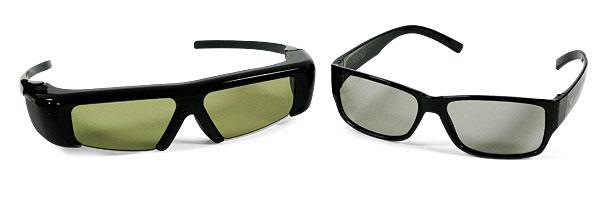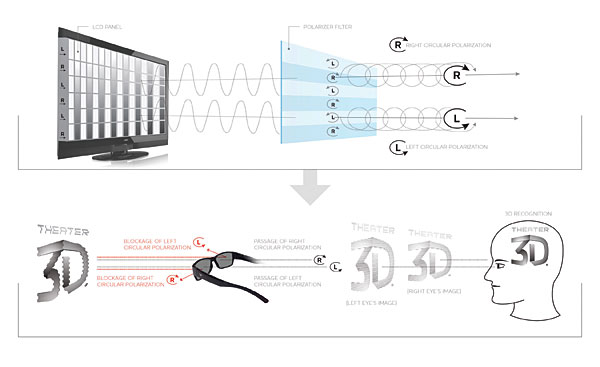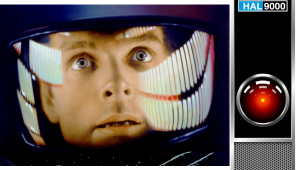A Passive 3D Approach

Up to the present, all 3D HDTVs have used active shutter glasses, and most still do. The two separate 3D images—one for each eye and each of them full 1920-by-1080 resolution—flash on the screen in sequence. Active shutter glasses are triggered by an IR signal generated by the 3DTV (or a separate transmitter attached to it). To isolate the 3D images to their respective eyes, the glasses alternately open and close each eyepiece. The alternating is rapid enough that even though the two pictures are displaced in time, the brain fuses them together and sees them as a single 3D image.
However, there’s a potential drawback with active shutter glasses. Each lens is an LCD element that can pass or block light depend- ing on how it’s energized. But the LCDs can’t switch on and off instantly. If the shutter in one eye is triggered to open at the exact moment that the other shutter is triggered to close, the time lag between them results in a brief moment during which both shut- ters are partially open. In this case, each eye will see a portion of the image meant for the other.
This results in what we call 3D crosstalk, or more descriptively, ghosting. To minimize the risk of this artifact, shutter glasses include a blanking period in their cycling during which both eyepieces block the light. In theory, this technique should prevent the viewer from seeing overlapping images. But it also reduces brightness.
In a 3DTV designed to use passive glasses, the set displays both the left and right images on the screen simultaneously rather than successively. Each image is circularly polarized in opposite directions (for how this is done, see the accompanying diagrams, plus the sidebars, “A Polarizing Discussion” and “Sensing a Pattern”). Passive 3D glasses are circularly polarized as well. With the two 3D images polarized in different ways and the glasses isolating them to the appropriate eye, the eyes and brain again meld the two images together into a 3D whole.
One benefit of this approach is that, since there’s no shuttering action, the brain receives both images at the same time. The risk for headaches and other nasties that afflict a small percentage of 3D viewers should be greatly reduced. (So far, our experi- ences with passive 3D are too limited to say if passive glasses might have unanticipated side effects.)
The passive glasses themselves have no batteries or electronic circuits, so they’re far cheaper than the active variety. They’re also lighter, so they should be much more comfortable to wear over extended periods. The circular polarization even lets you lie down without seeing 3D crosstalk, image dimming, or a loss of the 3D effect—all common problems with active shutter glasses when you tilt your head.
Passive 3D glasses can also be produced in more fashionable styles for those troubled by the geek-alert that many active glasses generate. Clip-on flip-down 3D lenses are possible for those who wear prescription distance glasses. Even prescription designer glasses could be in your passive 3D future (these won’t be cheap). If your local cinema also uses a circularly polarized system to display 3D images (such as the RealD sys- tem), you might even be able to take your own glasses to the theater and avoid those fingerprint-smudged, popcorn-greased hand-me-downs.
So what’s the catch? Since both the left- eye and right-eye images are on the screen simultaneously with passive 3D, each image commands only half of the screen’s vertical resolution. That means each eye sees an image with just half of full HD’s vertical resolution. For a 1920-by-1080 source, that’s 1920 by 540 pixels. Some people say that this is sufficient to call the result HD; they claim that two 1920-by-540-pixel images processed by the brain simultaneously amount to 1920 by 1080. Others argue that the 3D effect itself compensates for the loss of resolution. The jury is out on both of these propositions for now pending additional observations and research by academics in the physiology and psychology of sight.

If passive 3D in the home reduces resolution to each eye by half, what about the passive 3D that movie theaters use? Well, there’s more to the story. Due to the nature of today’s projection displays, these systems don’t suffer the same limited resolution. The two most widely used formats for theatrical 3D are IMAX and RealD. IMAX 3D typically uses two projectors, one for each image; it utilizes linear rather than circular polarization. On the other hand, RealD uses a circularly polarizing shutter placed in front of a single projector. This performs the same job as active shutter glasses in a home setup: Sequential, alternating polarized images from the projector, sorted by the circularly polarized passive glasses, results in a full HD image to each eye. Alternately, a theater may use a 4K projector, which can dedicate a full 2K HD image to each eye.
More critically, the loss of resolution associated with at-home passive 3D systems could become a problem when 3D content over cable, satellite, or over-the-air broadcast becomes more commonplace. Initially, and probably for years into the future, such 3D programming will use the side-by-side 3D technique. This method throws away half of the picture’s horizontal resolution. Combine that with the loss of half the vertical resolution inherent in the passive-glasses technique, and the result is a resolution of 960 by 540—most certainly not high definition.
The Bottom Line
As currently implemented, it’s clear that 3D using passive glasses involves some compromises. But for some viewers, its benefits may well outweigh its disadvantages.
- Log in or register to post comments























































